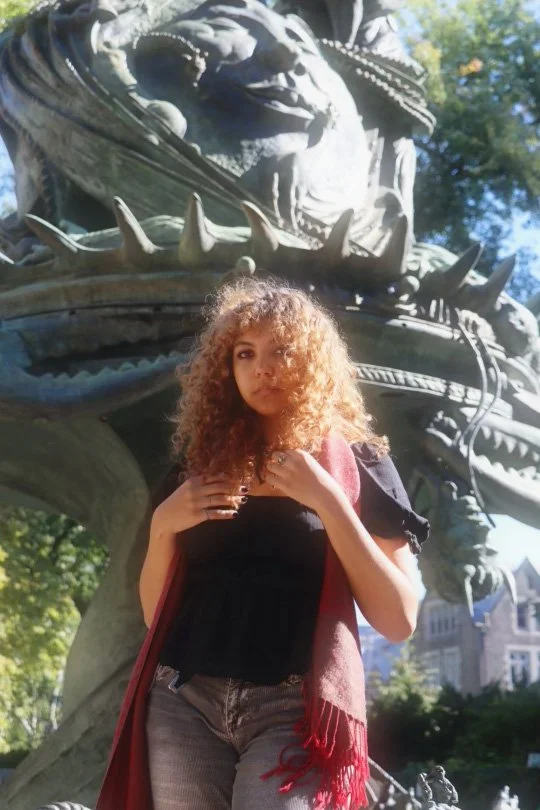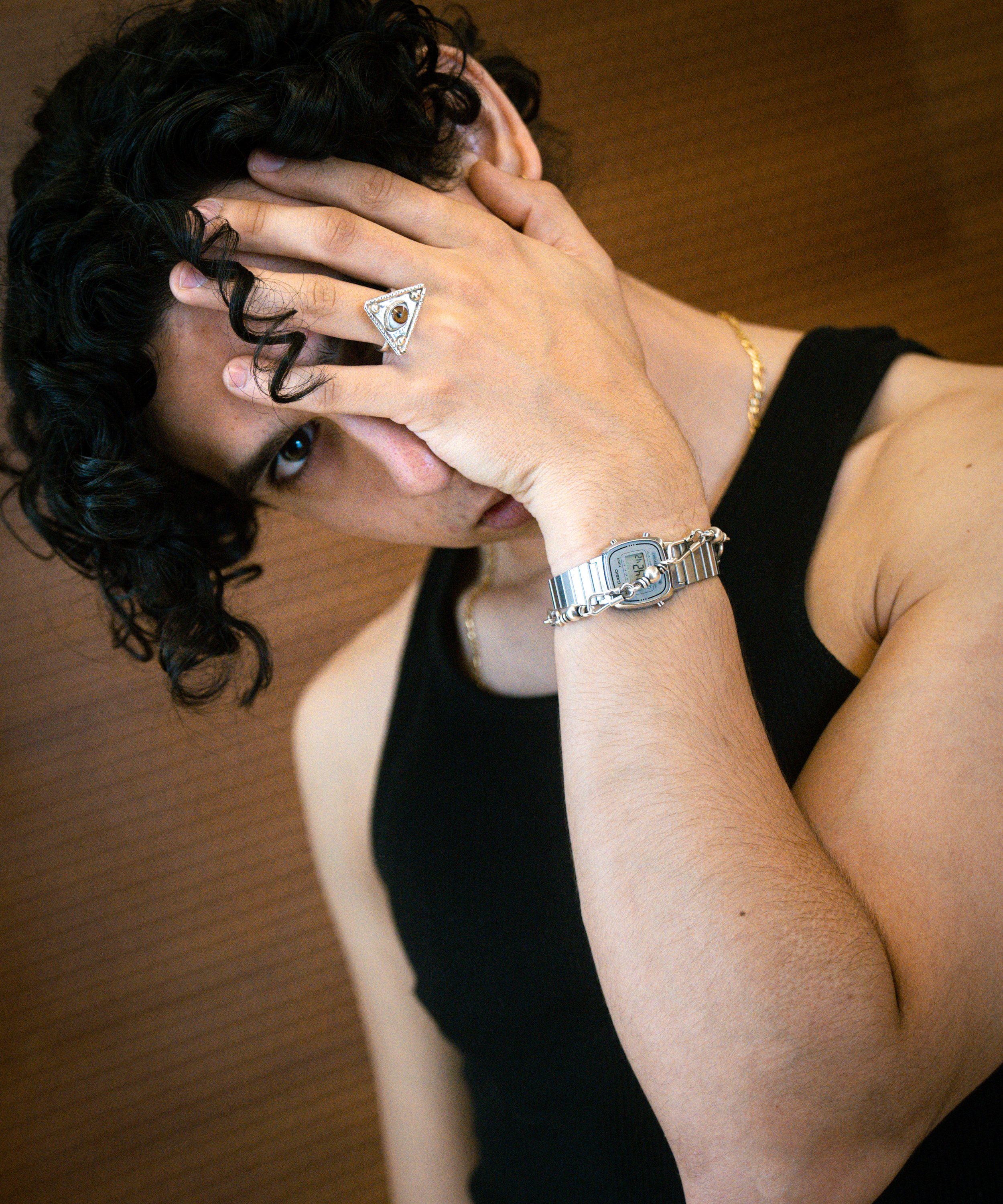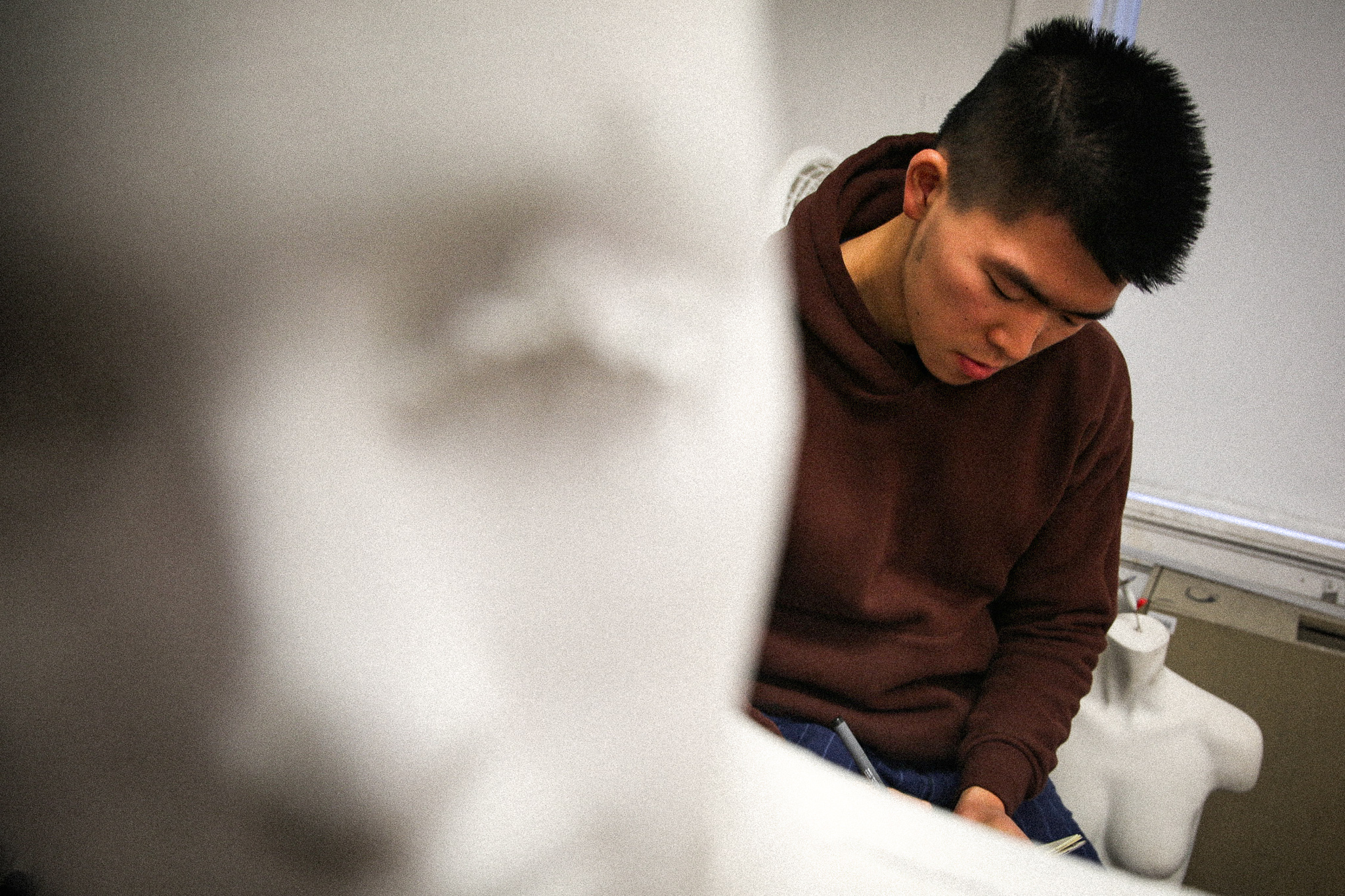
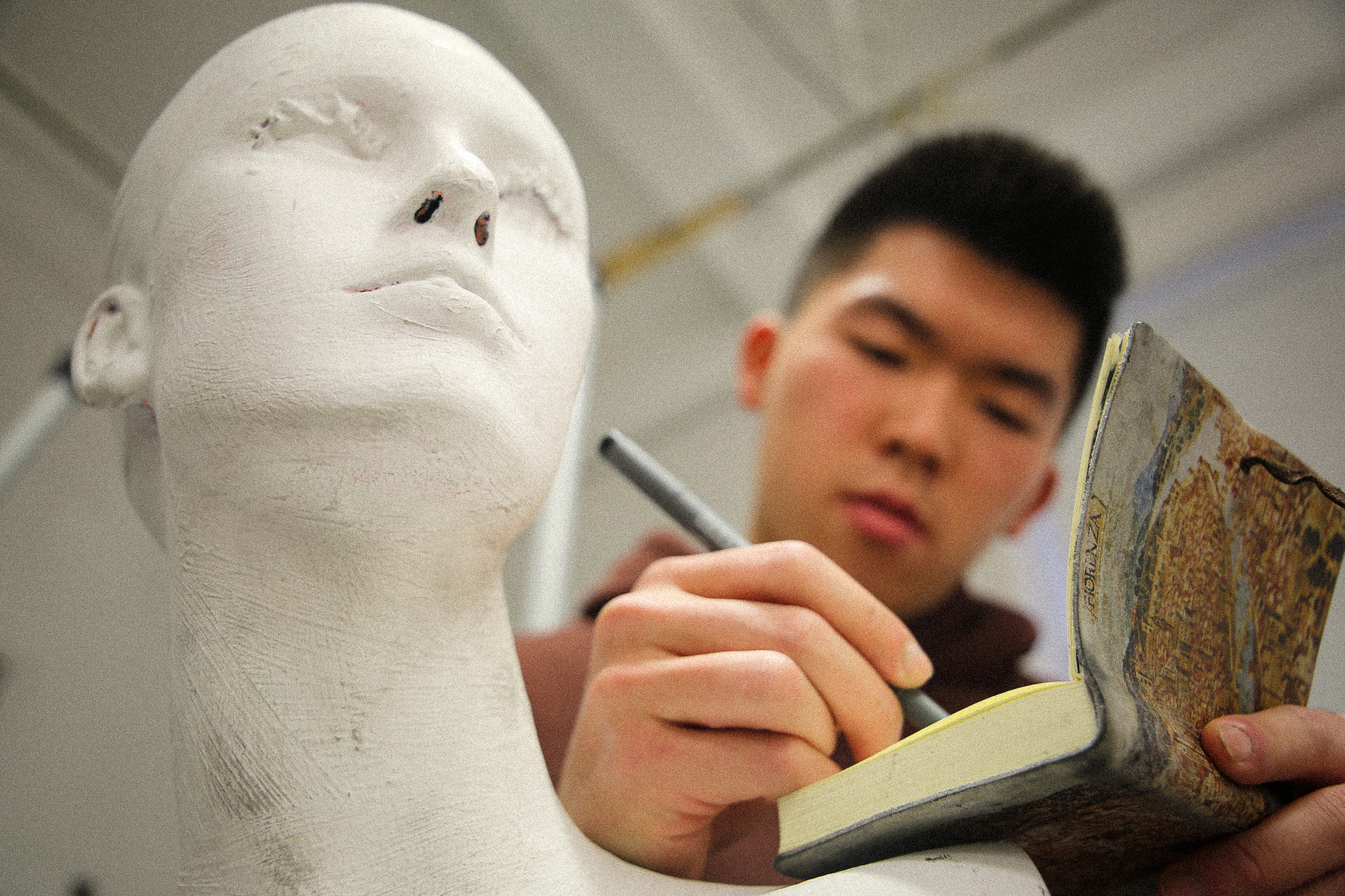
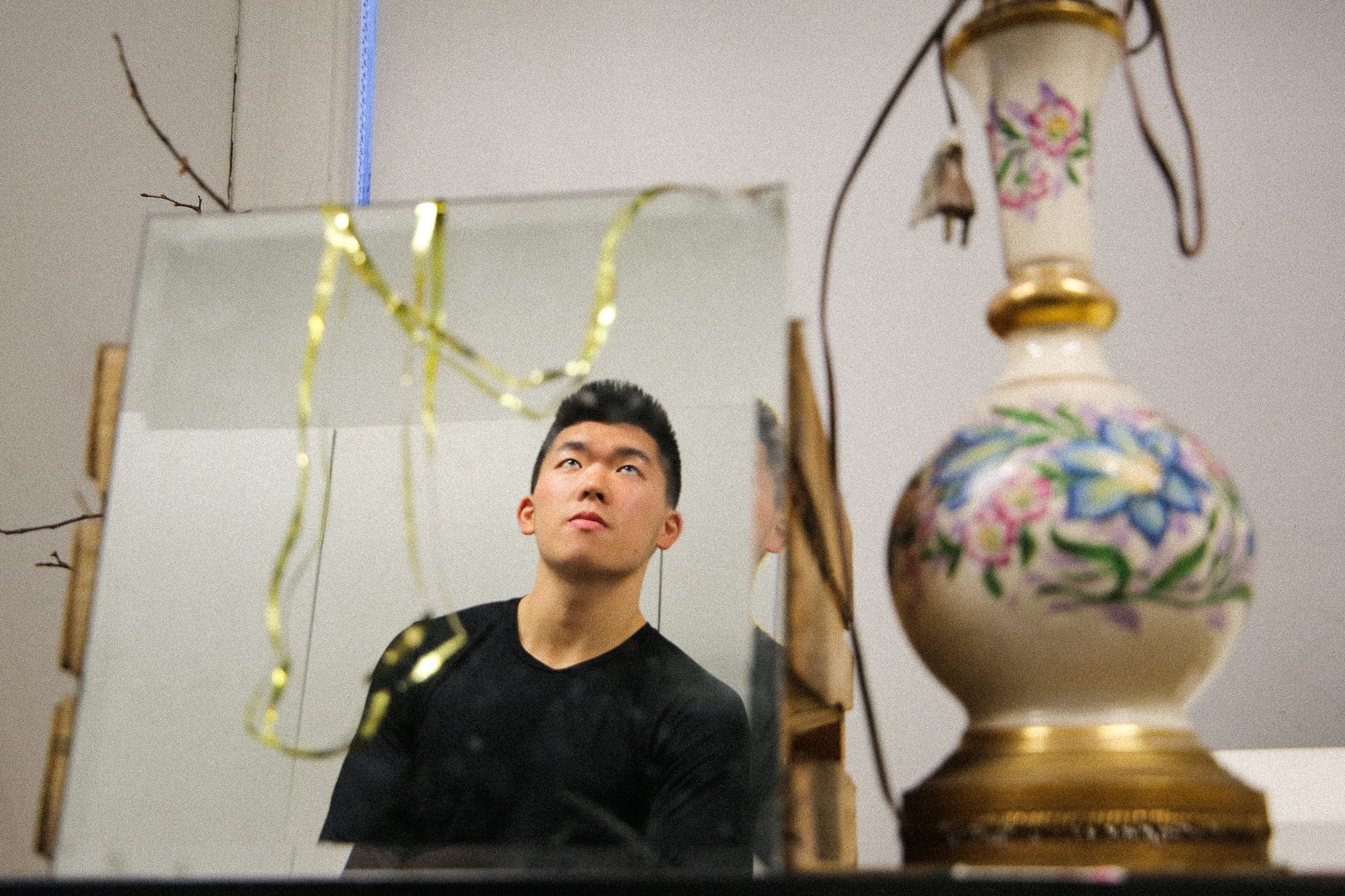
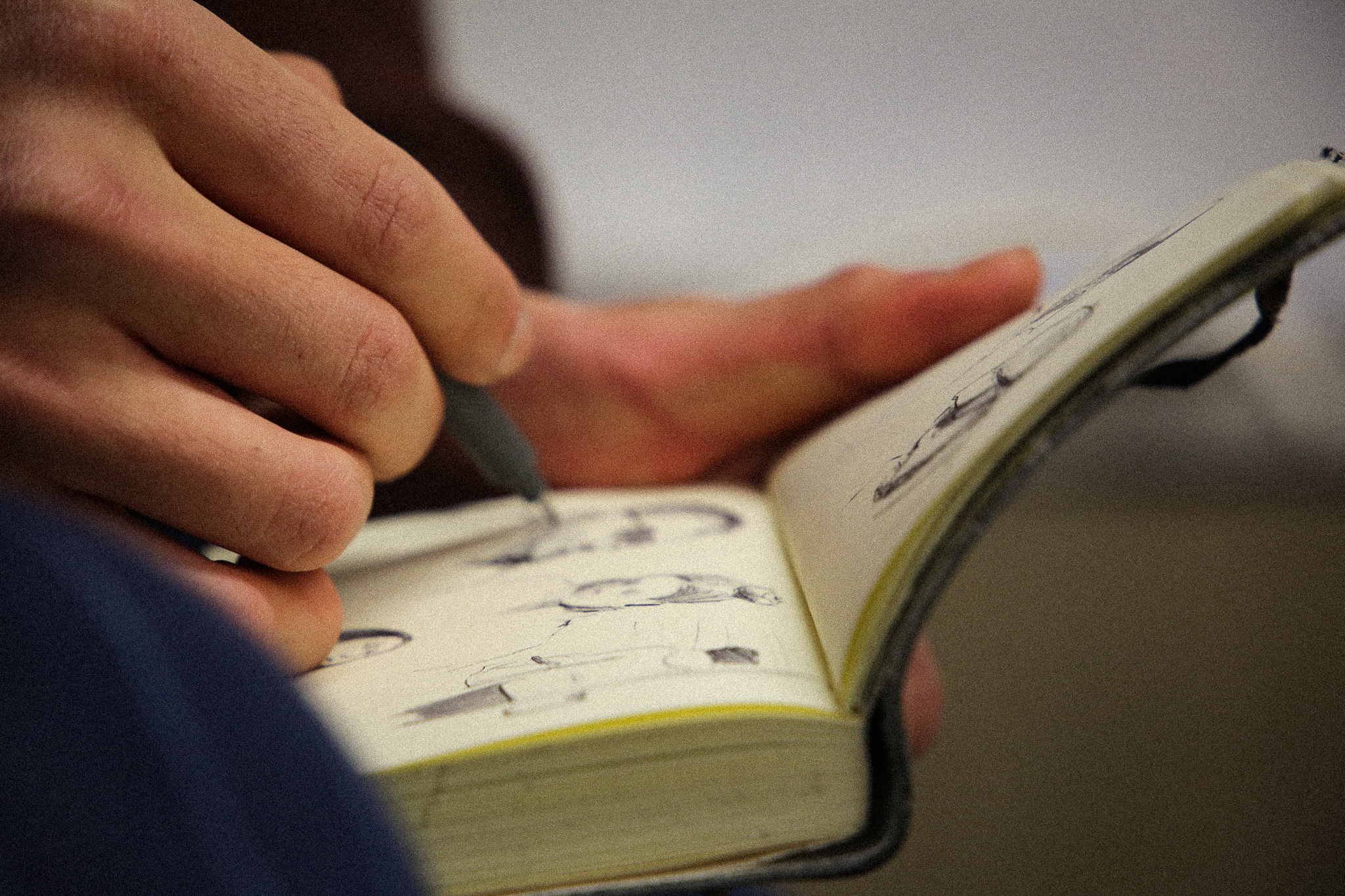
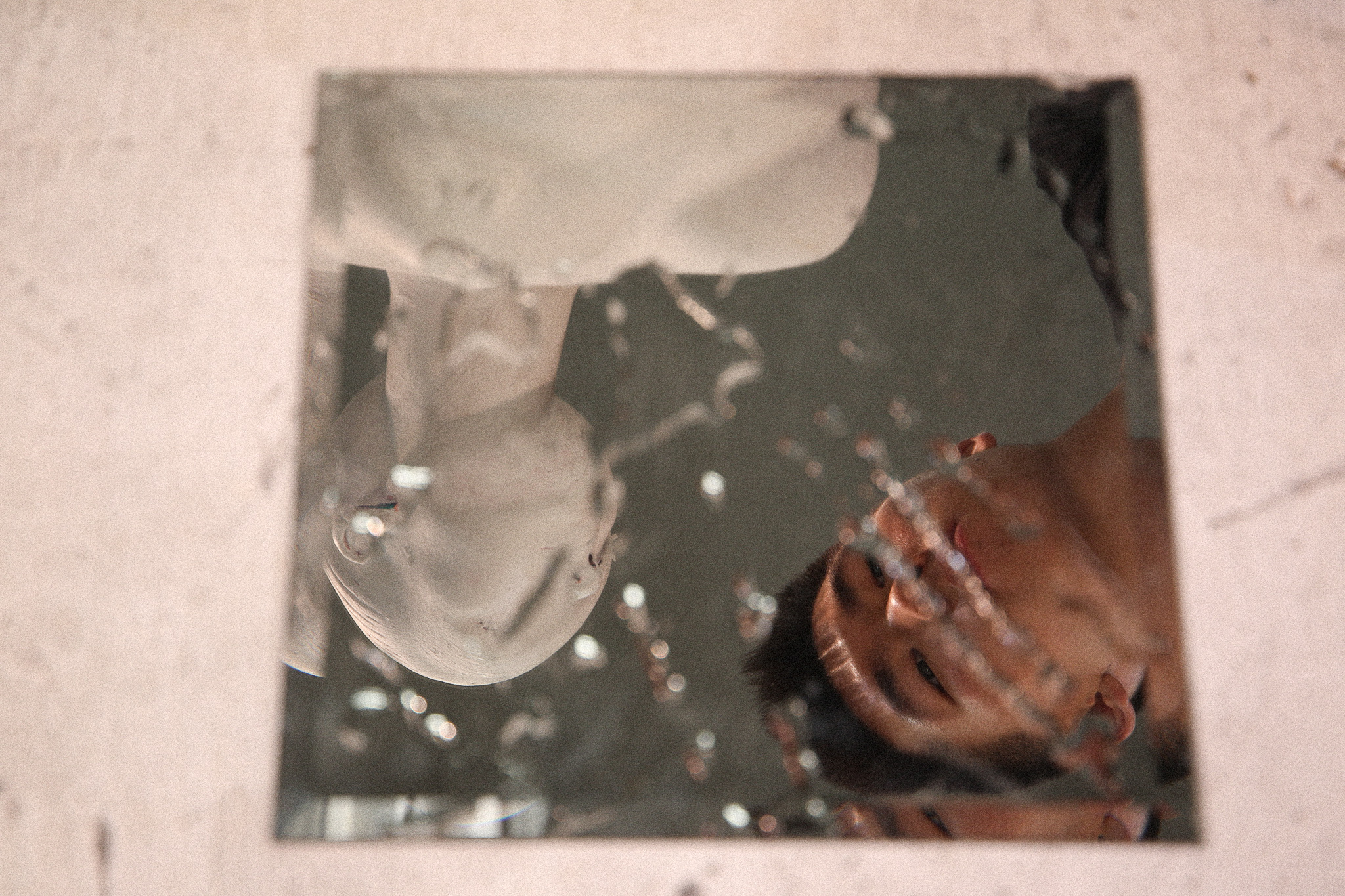
Photographs by Lola Lafia
Interviewed by Isabella Rafky
Tell me a little bit about yourself and your work.
I’m a sophomore [at CC] studying visual arts, and I plan on minoring in business management as well. I'm primarily an oil painter: I started oil painting when I was seven, which is a bit early for oil painting; but at the same time, I had a drawing foundation I have been working on since age four.
I’d say I come from a very artsy family, my father enjoys to paint as well and that has definitely passed on to me. My early work was representational, but slowly I feel like my style and focus have evolved. A lot of my recent pieces revolve around the human condition and the concept of ephemerality.
How do you like the visual arts major?
Quite frankly, it's very different from what I expected, it’s very theoretical: they definitely push you to organize and articulate your thoughts. Which is something I really appreciate because, before college, a lot of my classes made me feel like a machine, churning out art for the sake of a grade. Here at Columbia, professors really push you to think carefully about your work and really explore different opportunities. It doesn't matter if you fail or you don't like your work. These experiences add up, and you learn from them. That’s something I’m really enjoying so far.
How does it feel to be an artist at Columbia? What are your creative outlets on campus?
I appreciate all the student-led groups devoted to the arts on campus. Being an artist at Columbia, I’m not so focused on learning how to paint or draw, but rather learning from other individuals around me who are interested in related disciplines. I often myself collaborating with filmers or photographers. I think the collaboration between creatives is the best part of being a student artist at Columbia.
Photograph by Lola Lafia
What’s an art piece you wish you made?
Several really. But I think one, in particular, is Monet’s Impression Sunrise. It's not the most technically amazing or astounding piece, but what he’s able to achieve with such simple yet powerful strokes is incredible. I’ve been on a mission to simplify information in references for my work and create more with less. I often find myself studying Monet’s work if I feel like my work is lacking dynamicism, or if it feels “overdone”.
If you could have coffee with anyone living or dead who would it be?
I look up to a lot of classical oil painters, my favorite being Rembrandt. I would love to talk to him about how he approaches portraits. Because I absolutely love his self-portraits and the texture he is able to achieve with paint; it’s just so tangible.
If I'm thinking of people who are alive now who I really want to meet, I’d choose J. Cole (the rapper). He is always on repeat when I paint in the studio, and I love his deep and insightful lyricism. I think I’m drawn to his music because it feels genuine. He keeps it real and always has a nice balance between pure musicality and meaning. He's not just focused on delivering a message but also [on] making it very appealing to the ears.
Where is a place you go to be alone?
Of course, my studio is a very secluded place - if you want to call my dorm a studio. But a lot of the times I will go into the city, with or without friends. I’ll have my camera with me and go around documenting city life. So I guess you could say I’m not alone if I’m out there. But mentally I'm in a zone where I can just think freely, thinking about what really appeals to me when I observe things like the colors, the contrast in the lights, and some of the often overlooked details of city life. These are observations that inspire a lot of the environments you see in my paintings. Sometimes just going out late at night is a good way to feed your artistic inspiration.
Are you into photography or do you take photos to paint?
Actually, I just recently got into photography. I am excited to experiment with my new camera. In the past, I never really relied on reference images, but now I’m starting to realize how quality photos can influence my thought process. I’m not saying you have to have the perfect image to make a painting, but your sources definitely have a huge impact on the end result. I want to gain more meaningful content and stories through photography and use this towards a larger blueprint for various projects.
What is your favorite material? Why?
I would say oil paint is my favorite medium. In terms of mixed media, charcoal and oil have always been a very fascinating combination to me because I like to sketch in charcoal first and then layer on top with the oil paint. These two mediums are very compatible, and you achieve a lot of depth and volume.
I have also been trying to experiment more with technical tools, which is where the camera comes in. I have been getting more into cinematography as well. I think learning about the technical aspects of photography and cinematography creates a better understanding of light, which is crucial to my artistic practice because I like to render form - especially for humans - in a natural way.
Three words to describe your work.
Spontaneous, juxtaposing, and layered. When I think of juxtaposing, I think about infusing classical painting approaches with contemporary elements based on color, texture, things like that. I like to say my work is layered, both in terms of meaning and the actual application of paint; I think these characteristics combined make a painting very profound. In most of my paintings, you will never see the white of the canvas showing too much. The pigment always makes its presence known.
Three words to describe yourself.
Disciplined. As an artist who has a very active lifestyle, discipline helps me get up for the day and get ideas flowing. I think it’s important that I have the drive to get up every day and paint. And I’m not too concerned about whether I like something I make immediately. I would rather make ten bad paintings and have those learning experiences help me in making one masterpiece.
I’d also say I’m extremely self-critical. Looking back at a lot of pieces I wish I’d done something different. It’s hard for me to call something finished. I wouldn’t say I’m a perfectionist in the sense that I don’t strive to render every minute detail. I feel like most of the time I find myself brooding over the composition of a piece. I might tell myself I’ll spend an hour the next day doing final touches, but then I end up spending a whole week rethinking the composition.
The third way I would describe myself [is] as a student: a student of art, a student at Columbia University, a student of many activities. I think it’s easy to become good at something, but to reach the next level requires a lot of devotion. I study masterpieces at museums a lot and read a lot of books on fundamentals as well. I never was a fan of learning how to paint or draw from videos.
How do you relax? Is making art an extension of that?
Not really. I think the process of making art amplifies whatever energy I start with. I never sit down in my studio. I am very engaged with the piece, and it lets you interact with the material much more. Sitting down gives you tunnel vision as well. When I was young, I was taught to step back and evaluate the big picture. The thing is - and I still struggle with this - I sometimes get too caught up in one part of the piece, then realize something in the opposite corner feels off. It can be a nonstop train of thought.
Music also makes a big difference. It creates a mood for you -- different types of music push me to paint at different paces. Sometimes I’ll start [painting] a piece very rigorously because of an upbeat tempo. But when I get to the final stages of a painting, I'll slow down [and] listen to very tranquil and peaceful music to make sure every mark I put down is what I want to be on there. Sometimes, I just forget the music at this stage.
Would you say painting is more of a mental or physical activity? Is it both? How do they interact?
I think it’s definitely both. I think one aspect of painting that deserves attention, is the performance aspect of it. Not saying that I intentionally make a performance when I’m painting, but you know if I get into the music, and I move along with the rhythm; my brush is an extension of that rhythm onto the canvas. Everything is so intertwined - all these art forms - music, dance, performance art, studio art, I think it all comes together when you’re a studio artist. That’s something I really appreciate about being an artist, just being able to indulge in all these art forms and let it steer you in different directions where you never know what the end result will be, but that’s what makes art so exciting.
We already talked about this a little bit, but what is your history with art? How did you get into painting specifically?
My father worked a lot with Chinese ink and calligraphy. His passion for that passed on to me, but I found myself more interested in paint, mainly because of all the color combinations. I was learning painting and drawing at the same time. Some people would say to focus on a drawing foundation first and then move onto [working with] color. But for me I thought no, why not take an unconventional way of learning art because there is no right way to learn art. I was drawn to Monet and other impressionist artists when I was young. I think I was just fascinated by color and texture. I think my practice has matured and taken some detours towards academic training; but still, I feel like a lot of my current work is reminiscent of early inspiration.
How has your work and your perspective towards art changed over time?
My early work was impressionistic: lots of bold colors and texture on canvas. I wouldn’t say I’ve completely departed from this. I guess I’d describe my work now as impressionistic, narrative realism. People have become my primary subject matter, and I am always trying to position my subjects in an environment - sometimes it’s real and sometimes it’s ambiguous. It’s just this idea of ephemerality that I am so interested in. Painting the human condition in an immersive environment speaks to me. It’s intrinsic and conveys something natural. I’d say my work feels realistic, not through a photographic lens, but rather a tangible reality. I’m not focusing on pure realism, but rather something that you can feel in front of you.
What does style mean to you? How do drawing and painting differ? Does the genre dictate the form that you are working in?
Style is something that can’t be artificially created, you can’t force it upon yourself. That’s why there is debate about whether or not it’s helpful to actually copy old masters. You can build technical skill but not style. I think style is a reflection of experiences and observations; it’s something that doesn’t require much planning, something crude that needs to be laid out on the canvas or drawing pad; I think that’s how you preserve [your] authenticity.
How do you want your work to be seen? What do you notice? What do you want others to notice?
I want people to get up close and personal with the artwork and really see every stroke and layer of paint that went into that piece. It’s not just the overall image that’s important [or] that is what captures a viewer’s eye, but what makes you really appreciate a piece is the work that the artist puts in and the intimacy you have with the piece.
In making a piece, what’s the hardest part of the process for you?
Honestly, it’s very taxing on the body. When you devote literally three months to one painting or one drawing, your mind just becomes so clouded with just this work of art. You think, “could I pull this off?” “can I finish it?” That’s honestly the hardest part: just knowing do you have what it takes to finish a piece. I remember I did this one drawing last semester where I would stay in Dodge every night until two AM right before finals week. I wanted to make the drawing as real and tangible as possible. There have definitely been moments when I wanted to give up on a piece, but having devotion led to an end product that I really enjoyed.
When is a work finished?
For me, there are definitely moments when I feel I can close the curtains on a piece. But deciding this point can be difficult. I think different levels of finish tell different stories. I can paint a decent hand in ten strokes, or I can go on for maybe a hundred, or two hundred. When do I draw the line? It’s a decision you have to make. I think about what aesthetic and feeling I am trying to go for. I’m always cautious of overdoing something.
What are you trying to capture in a portrait? How would you describe your type of portraiture?
With every portrait, I try to leave something to be desired. I never paint a full-on portrait. I don’t think it’s the best way to capture someone’s face. Sometimes I’ll omit an ear or leave out a nose, or really develop the eyes and forget everything else. I want viewers to engage with the face and search for missing pieces.


























